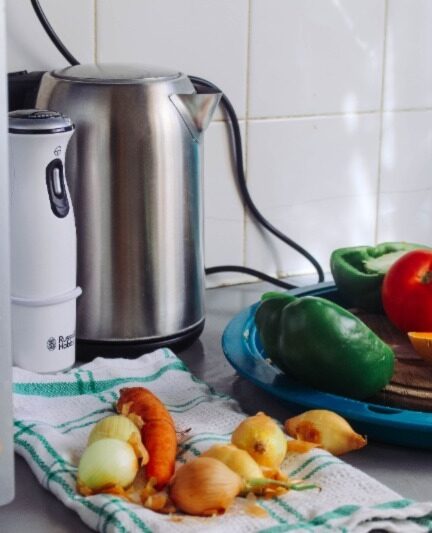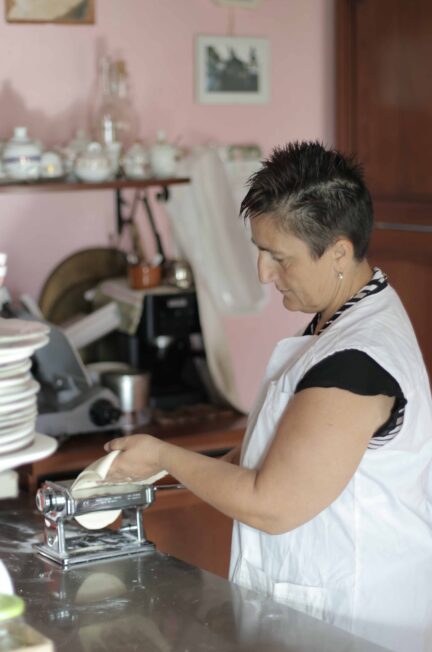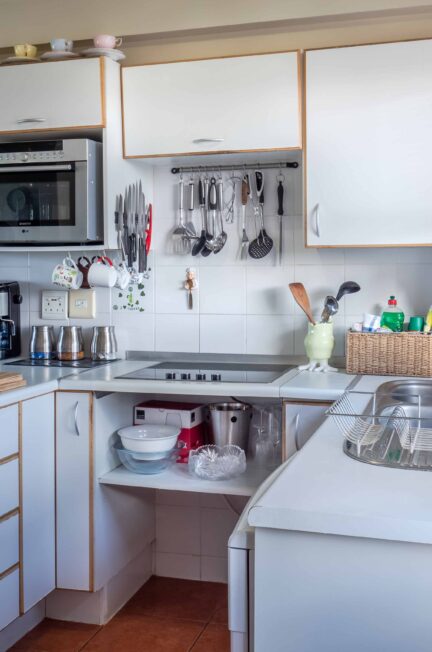Tired of your kitchen appliances taking up valuable counter space and creating clutter? Do you find yourself constantly shuffling things around just to make room for your toaster, blender, and coffee maker? If so, it’s time to learn how to arrange your kitchen appliances in a way that maximizes both functionality and aesthetics.
A well-organized kitchen not only makes cooking and meal prep more efficient but also creates a visually pleasing space that you’ll enjoy spending time in. By strategically arranging your appliances, you can create a streamlined and organized kitchen that is both practical and visually appealing.
How To Arrange Kitchen Appliances?
In this blog, we will walk you through the process of arranging your kitchen appliances, from determining the most efficient layout to choosing the right storage solutions. With these tips and tricks, you’ll be able to create a kitchen that not only looks great but also functions seamlessly.
Assess Your Kitchen Layout And Space
Every kitchen is unique, and understanding its size and shape will play a vital role in determining the most suitable appliance arrangement.
Consider your kitchen’s size, whether it’s little and cozy or vast and expansive. Compact kitchens may necessitate more deliberate space utilisation, with an emphasis on maximising storage and efficiently utilising vertical surfaces.
Larger kitchens, on the other hand, allow for greater flexibility in appliance placement, but it’s critical to maintain a logical workflow and avoid unnecessarily moving between workstations.
Examine the arrangement of your kitchen, whether it’s galley, L-shaped, U-shaped, or open-concept. The form will affect the natural flow of movement and determine where specific appliances should be placed for best functioning. In a galley kitchen, for example, arranging frequently used equipment along one side can help to speed up the cooking process.
A well-thought-out arrangement will not only enhance your cooking experience but also make your kitchen a more organized and inviting space.
Grouping Appliances by Functionality
Organizing your Kitchen Tools based on functionality is a smart and practical approach to setting up your kitchen efficiently. By creating dedicated zones for different appliance categories, you can streamline your cooking process and enhance overall kitchen functionality.
Consider grouping your kitchen appliances into categories such as cooking (stovetop, oven, microwave), food preparation (blender, food processor, mixer), and beverage-making (coffee maker, kettle). Placing these appliances in their designated zones enables simple access to the equipment needed for certain jobs, saving time spent hunting for goods and lowering countertop clutter.
Having specific areas for various appliance types encourages a seamless workflow as well. When all of the cooking equipment are close to each other, you may effortlessly shift from stove to oven without taking any extra steps. Similarly, keeping the food preparation appliances near together allows for a smooth transition from chopping to blending.

Prioritize Frequently Used Appliances
A fundamental technique for creating a highly functional and efficient kitchen space is to prioritise frequently used appliances by positioning them within easy reach and adjacent to food preparation areas. The principle of accessibility is critical in establishing a pleasant and joyful meal preparation procedure.
You may easily transition from one task to another by having frequently used appliances like the microwave, blender, and toaster within arm’s reach of the food preparation area. This removes the need to navigate the kitchen, saving important time and effort when preparing meals.
Having easy access to regularly used appliances encourages you to cook more frequently and experiment with new ideas. When you have access to equipment, you are more inclined to participate in culinary experimentation and creative cooking endeavours without hesitation.
Furthermore, accessibility promotes kitchen safety. By placing frequently used appliances close to food preparation areas, you minimize the risk of accidents and spills that could occur when carrying hot or heavy items across the kitchen.
Consider Work Triangle Concept
The work triangle concept is a key notion in the kitchen design that tries to maximize culinary efficiency by putting the three essential workstations – the refrigerator, stove, and sink – in a triangular configuration. This approach assures that these essential components are near to each other, producing a functional and efficient work triangle.
The refrigerator, which is used to store ingredients, is usually situated at one of the triangle’s points. The stove, which is used for cooking, is positioned at another point, and the sink, which is used for food preparation and cleaning, completes the triangle. This design eliminates needless movement and promotes a seamless workflow during meal preparation.
The kitchen work triangle approach has various advantages for increasing cooking productivity. For starters, it shortens the distance between essential workstations, making it easier to gather supplies, prepare them at the sink, and cook on the stove. This saves time and work and allows for a more efficient cooking procedure.
Second, the work triangle reduces cross-traffic in the kitchen, reducing congestion. This is especially useful in busy families or at parties when numerous people may be using the kitchen at the same time.
By strategically placing the refrigerator, stove, and sink in a triangular formation, cooking productivity is optimized, and the kitchen becomes a more functional and enjoyable space for culinary endeavours.
Utilize Vertical Storage Solutions
Vertical storage solutions, such as wall-mounted shelves or racks, are an innovative and practical method to optimize kitchen organization while freeing up important counter space. These storage choices make the most of the kitchen’s typically underutilized vertical regions, delivering several advantages.
Wall-mounted shelves and racks are perfect for storing small appliances that are not used frequently. Blenders, mixers, and even spice racks may be neatly organized on these shelves, making them accessible while remaining out of the way. Not only does this eliminate countertop clutter, but it also creates a more spacious and visually appealing kitchen setting.
Furthermore, vertical storage solutions are adaptable in their use. They may be put on empty walls or the sides of cabinets, maximising every possible inch of space. This is especially useful in smaller kitchens where space utilisation is critical.
Vertical storage may be utilised to display ornamental culinary items, cookbooks, or even hanging pots and pans, giving a bit of character and personality to the kitchen.
Homeowners may create a more organised, useful, and aesthetically beautiful kitchen by utilising vertical storage options, making everyday food preparation and cooking a more joyful and efficient experience.
Maintain A Clutter-Free Countertop
Maintaining a clutter-free countertop is vital for creating an aesthetically pleasing and productive kitchen. Only display the most commonly used gadgets on the countertop.
A clean and uncluttered countertop not only improves the overall beauty of the kitchen but also creates a sense of serenity and organization. Meal preparation becomes more efficient and fun with fewer obstructions in the kitchen.
A clutter-free countertop is also easier to clean and maintain, saving you time and effort in your daily kitchen routine. Maintaining a clean environment allows other decorative pieces or fresh foods to take centre stage, giving charm and warmth to the heart of your house.
Concealment Options for A Streamlined Look
Appliance garages, cabinet doors, or curtain panels are good concealment options for keeping the kitchen looking sleek. You may establish a clutter-free and unified design by concealing appliances while not in use.
Appliance garages are ideal for tiny appliances, whereas cabinet doors may conceal bigger equipment such as refrigerators or dishwashers. Curtain panels are an adaptable option for open shelves and pantries.
Concealing appliances not only makes the area more organized and aesthetically pleasing, but it also allows the design and décor of the kitchen to shine. Make use of these concealment options to create a streamlined and beautiful kitchen that emanates simplicity and class.
Enhance Safety And Accessibility
When organizing appliances in the kitchen, it is critical to prioritise safety and accessibility. It is critical to securely place heavy or big equipment to avoid accidents. Fasten appliances like refrigerators or ovens to the wall or floor with anchor straps or brackets to reduce the chance of their toppling over. Also, keep electrical wires neatly organized and out of the way to reduce tripping risks.
Furthermore, when placing kitchen appliances, keep in mind the demands of all users. If the kitchen is used by numerous family members or people with different physical abilities, prioritize easy access to equipment and workstations. For easy access, adjust countertop heights and consider installing pull-out shelves or drawers.
A well-designed kitchen with accessibility in mind fosters independence and inclusivity, ensuring that everyone can navigate and utilize the space safely and comfortably.
Conclusion
Finally, organizing kitchen tools to produce a laid-out and functioning kitchen environment involves numerous key stages. Begin by examining the layout and available space in your kitchen, identifying commonly used gadgets, and decluttering to prioritize the necessities. To build specialized zones that streamline your workflow, group appliances by functionality.
Consider the work triangle concept, which involves arranging the refrigerator, stove, and sinks in a triangular configuration to maximize kitchen production. To free up critical countertop space, use vertical storage alternatives such as wall-mounted shelves or racks. Maintain a clutter-free countertop by reducing the number of appliances on show, and embrace concealment options such as appliance garages or cabinet doors for a streamlined appearance.
Improve safety and accessibility by securing heavy appliances and taking into account the requirements of all users, resulting in a pleasant and inclusive kitchen environment.
Take the time to personalise the layout to fit your preferences as you follow these instructions, resulting in a kitchen that stimulates culinary innovation and delight. Remember to adapt the information to your specific cooking setup and lifestyle. Refer to appropriate reference sites that complement the information supplied for further direction and inspiration, allowing you to build a kitchen environment that seamlessly integrates practicality and beauty.



